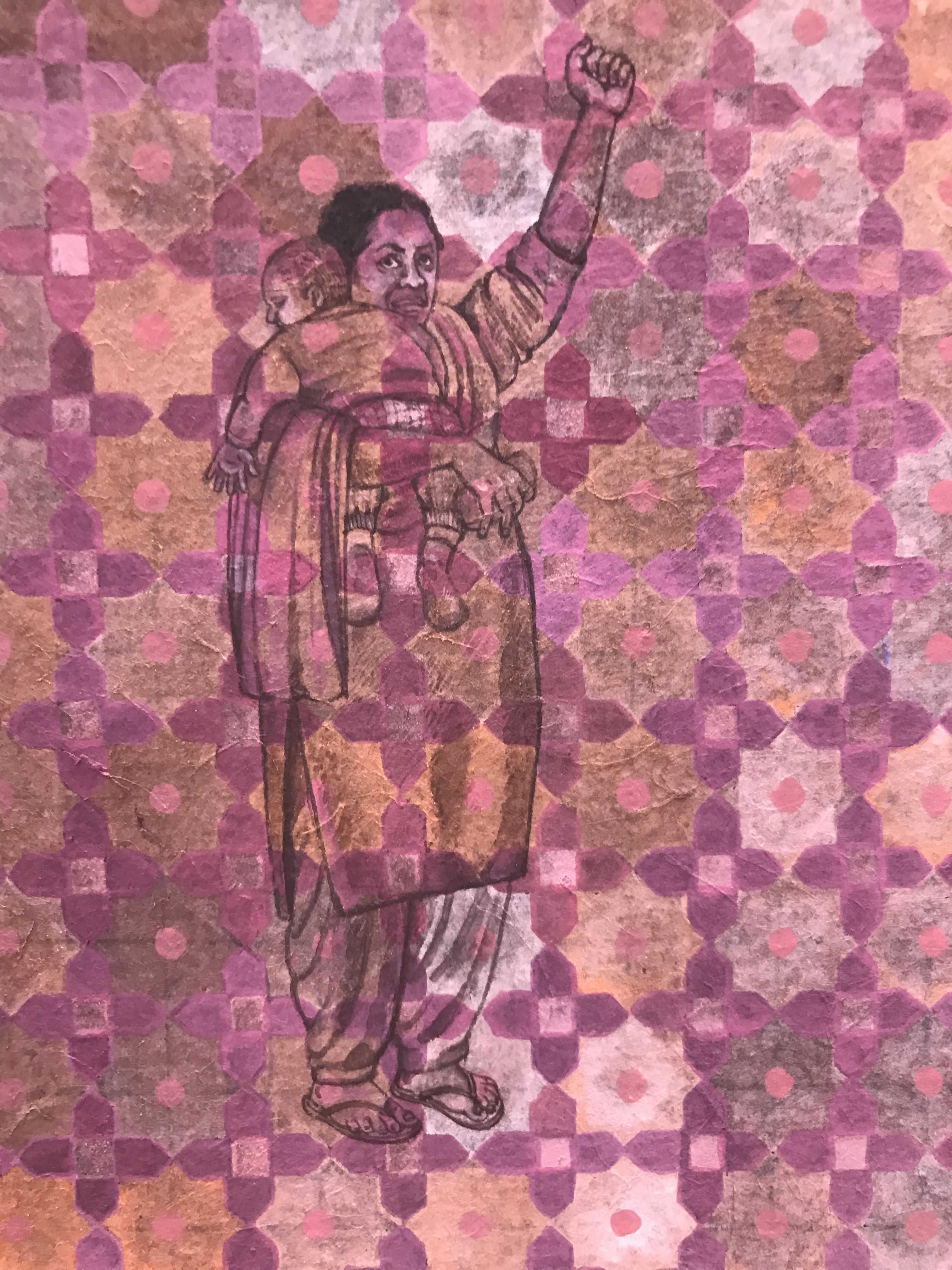On Feminist Solidarities and Radical Hope/ Varunika Saraf/ Issue 16
I am interested in women’s agency. Thinking about women as makers of their futures and as agents of socio-political change gives me hope when I struggle to make sense of the world around me. Now, more than ever, I believe we must reassess what it means to be a part of a tradition of feminist practices of making, thinking and doing. Our task is urgent, as most of our traditions are dangerously patriarchal. What does it mean as an artist to hope for and constitute a feminist tradition? This is a question that I find myself returning to with alarming regularity. Each generation needs to reassess and reconfigure what friendship, politics, and feminism mean to them. We need to continuously reaffirm that a different world is possible and think deeply about this for ourselves. What kind of a world do we ultimately envision? Who do we choose as our forerunners?
As I look back at the last fifteen years of my life, it is clear that I have forged very strong relationships with women. These feminist friendships began in classrooms and libraries and deepened as we read, argued and protested. None have been easy; we have bickered, disagreed, and even had bitter fights, but in the process, we grew in our friendships and as individuals. It is to them and the feminists whose works we collectively explored who I turn to in difficult times. I realized it is not sufficient to look unflinchingly at our world and find the courage to “sing about dark times.” That’s half of it; perhaps the more challenging part is to imagine and thereby engender. bell hooks says, “The function of art is to do more than tell it like it is—it’s to imagine what is possible.” To fully picture the radical and beautiful possible futures, I turn again to women who inspire me through their actions and deeds. Because, “each time a woman stands up for herself, without knowing it possibly, without claiming it, she stands up for all women” (Maya Angelou). Consequently, in little but big ways, for an equal future, a step towards building a community of care and solidarity.

This painting (the cover art) was the first I created in the series Those Who Dream. I stumbled across the image of a woman protesting with her baby in news media covering the farmer’s protest in the winter of 2020. The Government had just passed three acts which many of us considered anti-farmer and detrimental to the nation. As expected, women equally joined in these protests. In its criticism of the government’s handling of the situation, the then Chief Justice of India S.A. Bobde asked, “Why are women and elders kept in the protest?” All the photographs testified otherwise; women had joined in large numbers, exercising their right to protest as equal citizens. Are women not farmers? What is it about a woman entirely in control of her agency that is disconcerting? Do women have to be told what’s right for them, to protest or not? Why does society insist on infantilizing women, treating us as a constituency that needs to be controlled, taught, supervised? Women contribute equally to farming even though only a handful own land; it is also a fact that women’s unpaid labour subsidizes the economy. When women protest, they stand up for a lot more; inversely, they stand to lose a lot more. Here, in this case, by coming out with her child, she was opposing not just the farm laws but also, at the same time, a society that continuously tells her at every turn what she can and cannot do, what is appropriate and what is not. All the women who protested against the farm laws and the multitude who sat in at Shaheen Bagh have become synonymous with hope. Through women, I found courage in my darkest hour. Therefore, as a woman and an artist, I want to constantly highlight the mycelial network of women that stretches back in time, the many challenging but rewarding friendships and solidarities that push us to dig deep into shared feminist imaginaries and dream of love with all the radical possibilities it engenders. It is a commitment to the world I wish to live in.
Dr Varunika Saraf is an artist and art historian based in Hyderabad. Saraf has participated in several group shows such as Makeshift Memorials, Small Revolutions, Blaffer Art Museum (2024), Sangam/Confluence, Heidelberger Kunstverein (2020), Critical Constellations, Foundation for Indian Contemporary Art, New Delhi (2019), Days Without a Night, Max Mueller Bhavan, New Delhi (2018), and Phantoms of Asia, Asian Art Museum, San Francisco (2012). She is the recipient of Asia Society’s Asia Arts Future Award (2023) and FICA’s Amol Vadehra Art Grant (2016). She was the Summer Research Fellow at the Getty Research Institute, Visiting Fellow at the Max-Planck Institute, Florence, NTICVA Visiting Fellow at the V&A Museum and the CWIT fellow at the Centre for South Asian Studies, University of Cambridge. Saraf holds a PhD and an MPhil (Visual Studies) from JNU, an MFA (Painting, 2006) from the University of Hyderabad and a BFA (Painting, 2003) from JNTU College of Fine Arts. In 2023, she participated in the Sharjah Biennale 15, where she received an honourable mention for her embroidered series, We, The People. Her works are currently on view at the Asia Pacific Triennial 15, Queensland Gallery of Modern Art. Saraf is represented by Chemould Prescott Road, Mumbai.